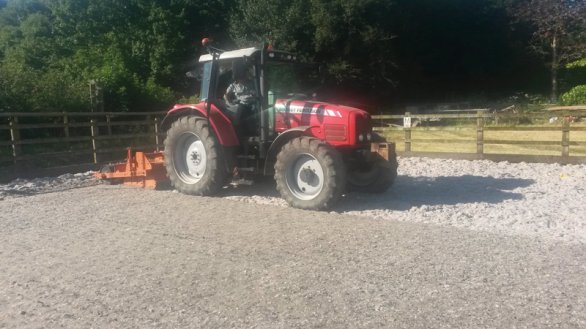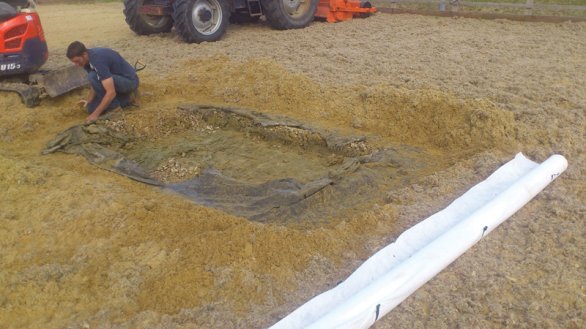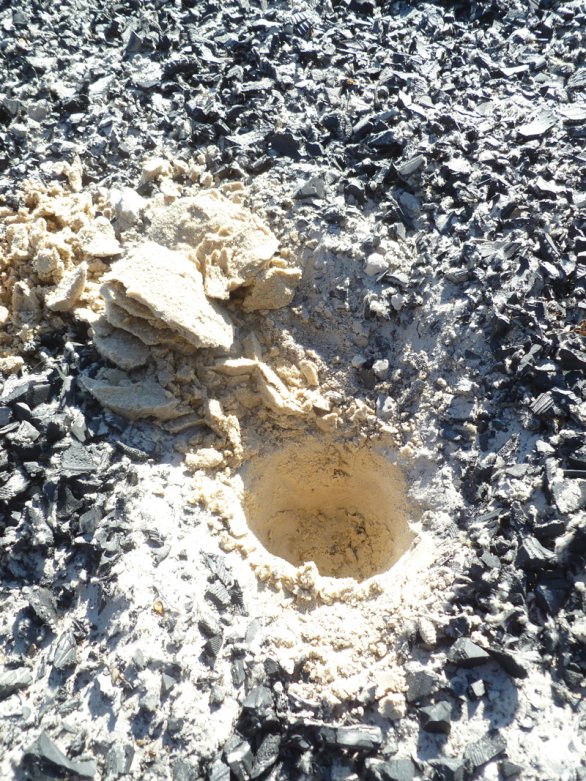How many of you have taken a spade or trowel in to your riding arena recently and walked around testing the surface structure? Not very many I fear. The following suggestions are based on outdoor situations for a non-waxed sand and synthetic surface top.

Observations should be made at multiple points within the enclosure to consider, firstly the depth of surface covering the membrane, then the membrane condition and then the areas where water may have collected. Also check for surface compaction. If in an outdoor situation drainage problems are present, professional help should be sought, as this can be down to a multitude of issues, some not so apparent to an inexperienced eye.
If your surface varies in thickness it could be down to low maintenance or an incorrect raking régime, lunging in one spot, (fatal). Vary your circling spot and method each time.
Try not to store your jumps in the middle of the arena; this limits even surface use dramatically. Store the wings and poles outside of the Arena.
If you have found uneven depths, several fit helpers with shovels and wheel barrows will shift it back to the thin areas. Maybe a top up of sand will be required if there is insufficient sand to go round, aim for 125 ‑150mm over all depth. Consult a reputable contractor to ensure you get the correct sand. Silica is too broad a term and can easily come unstuck with the incorrect one.

If you have small defined areas with ripped membrane showing, these should be repaired before any of the above is done. More extensive damage to the membrane can lead to it being removed altogether if the sub- surface is sufficiently tight and settled, or if not a new membrane will need to be put down altogether.
Assuming your arena is sand based with a synthetic top, usually PVC or Rubber, it is useful to examine the depth to which the synthetic is mixed with the sand. Ideally there should be half the depth with the 2 elements mixed, with the final 50% of the depth pure sand, normally 3 inches. If this mixed top surface is deeper, a top-up of ideally rubber should be considered as this is arguably one of the best insulators from the sun evaporating precious moisture and insulating the sand to frosts. Plus there is the added benefit of a cushioned ride. Various rubber types are available so please check with a professional which will be the most suitable for your situation.
Regular maintenance will keep the rubber on top and reduce the risk of sand dehydration. During longer periods of dry weather moisture evaporates which leaves the sand dry and loose. This moisture is the sands adhesive and important to retain, another reason to groom the surface and keep flat to reduce the surface area.
Fibre is now a popular material to provide structure to your surface and prevent “Deep Going”, this spread and incorporated accurately is a very successful addition to a sand or sand and synthetic based surface. Fibres will also assist in moisture retention and a provide frost resistance.
Mark Scott Arenas provide a range of fibres to incorporate into surfaces to assist stability, insulation, energy return and surface structure.
Sometimes compaction is a problem and the water cannot physically get through the sand to the drains. This can be remedied by very carefully using a robust and heavy duty Arena Groom set correctly to avoid membrane/ sub surface disturbance and operated in several directions. If this still fails a small excavator to break up the sand surface and relaying it should do the trick. This operation will also liven up the surface and bring some energy return back to the ride.
To conclude, you can generally never over-do your arena maintenance. Pay attention to the weather ‑generally in the winter sand is wet and will not move around so much and may need slightly less time grooming. However, with summer comes sun shine and evaporation, the sand dries out and then moves around very easily. If you have a synthetic surface, harrow very lightly every day to fill hoof marks reducing the surface area and therefore dehydration together with keeping your Rubber/ PVC on the surface to do its insulating job.
If in any doubt please ask professionals to visit and provide a solution to your concerns.
Tel: 01580 292751, info@markscottarenas.com
www.markscottarenas.com
